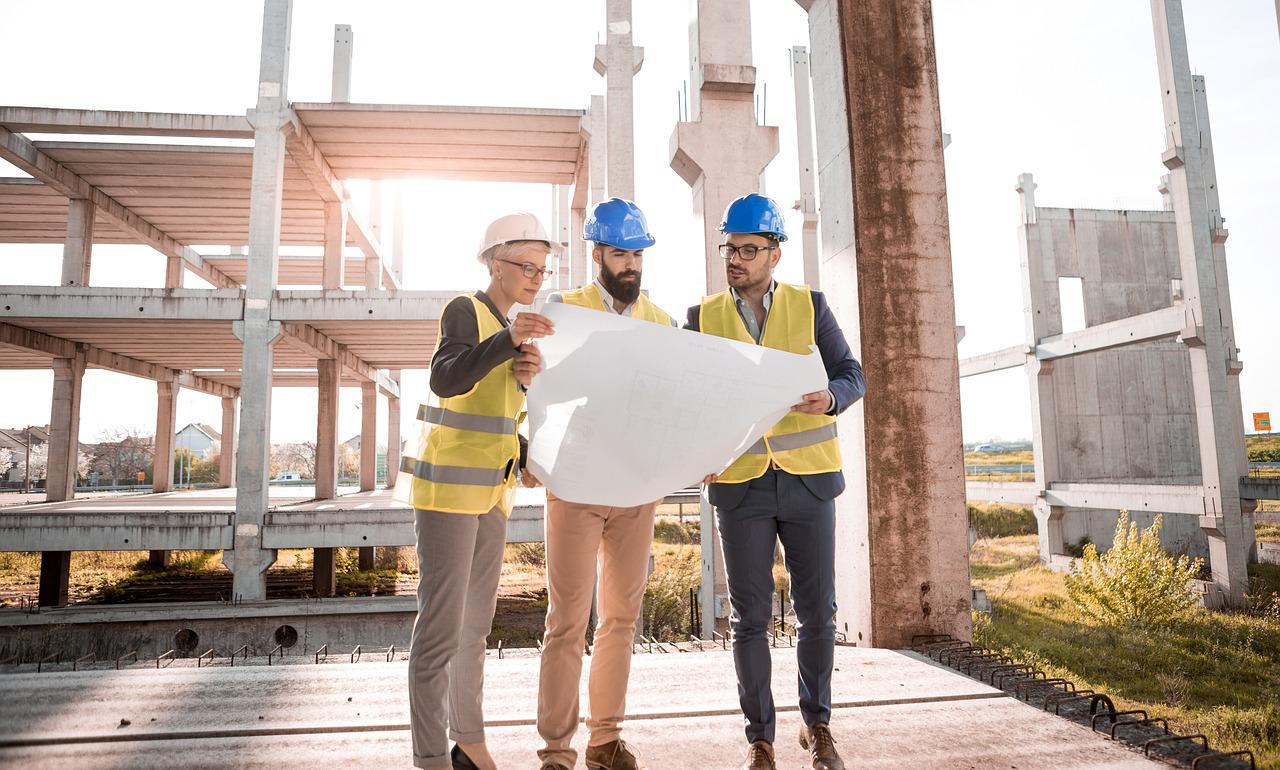Purchasing a manufactured home can present a lot of advantages. Depending on your housing goals and financial desires, a manufactured home can be exactly what you are looking for.
Manufactured homes present an opportunity to purchase a sizable home at a lower cost compared to traditional stick-built homes and can even offer high-end finishes (see: manufactured homes vs. stick-built).
Some of the common questions when individuals begin considering purchasing a manufactured home focus on the building process, how long it takes and how it generally works.
It is common not to be familiar with the processes. Many things have changed in the last decade and building a manufactured home has undoubtedly become more streamlined.
The rest of this guide will explain the building process and what you can expect; and, of course, we will certainly cover how long it takes to build a manufactured home from start to finish.
Let’s start looking at some of the specifics.
How Long Does it Take to Build a Mobile Home?
Building a manufactured home is faster than building a traditional home.
Manufactured homes can now be built efficiently utilizing housing plants and specialists that focus on specific trades to help construct manufactured homes quickly and efficiently.
However, several steps still need to be completed in the building process, and they need to be understood as well; especially for everyone reading that is considering this route for their first home or their next home.
Below, we will begin diving into the individual steps you can expect in the construction phase and building process with manufactured homes.
By the end of the discussion, you should have a clear picture and timeline of the process, the steps involved in how mobile homes are built, and what you can expect.
Let’s kick it off with step 1.
Understanding the Manufactured Home Building Process
Manufactured homes, on average, will take about four months to build from start to finish.
However, several steps in the process can impact the total time needed to build a manufactured home.
Much like the process you would encounter building a traditional home, the first thing you need to cross off your list building a manufactured home is funding.
You will need to secure mobile home financing for the construction process to begin.
Here is how it works:
Securing a Construction Loan for Your Manufactured Home
Funds need to be secured for the actual construction of a modular home to begin. Usually, you will find your lender first. Once this is completed, the lender will receive the information pertinent to the construction.
This will typically include cost estimates and how the funds will be used.
Another notable item to consider is that interest typically accrues throughout the construction process on manufactured home loans.
Once construction on the manufactured home is completed, you will typically have the option to convert the loan to a fixed-rate loan, essentially serving as your mortgage.
Of course, only until the manufactured home itself is paid off.
Next, we need to determine where your mobile home will be located.
Locating Your Desired Building Site
Before diving into the construction process, you need to figure out where you desire to live and where your manufactured home will be located once construction is complete.
This needs to be completed before getting into the building specifics, such as choosing your interior, whether you will have hardwood finished flooring, and how you will decorate your home.
You should be sure that during this part of the process you check the zoning and other regulations or restrictions before making any land purchase. Learn all about wind zone ratings for mobile homes here.
Not doing so could result in delays in the entire process. Potentially even a few months.
A professional is typically recommended when having the property surveyed and checked before making your purchase.
Now, the excitement and construction can begin.
The Manufactured Home Building Process
The next phase of the process will be the actual construction of the manufactured home, which can take anywhere from a few days to a few weeks, and even up to a few months, depending on the manufacturer home builder you choose to complete the job.
The manufactured home will be built off-site in a climate-controlled environment.
Palm Harbor Homes is a great website full of information about the building and developing process and can also be a resource for modular home insurance and lending resources.
Not to mention, Palm Harbor Homes can help you find the information you need to find the manufactured home builder you desire.
You can check out Palm Harbor Homes by visiting their website here.
Now, let’s look at the building steps involved with a manufactured home.
The Base Frame Construction of a Mobile Home
The base frame construction of a manufactured home comes first. The base frame and floor will be assembled on steel beams or joists during this phase.
Typically, the steel beams will be welded together with a slight curvature, creating a cambered chassis. This method helps distribute the weight of the home.
This also helps when the manufactured home is transported to support against the road vibration at higher traveling speeds.
HVAC, Sub-Flooring, and Flooring Installation
After the completion of the base frame, the HVAC will be completed, including all ductwork.
During this phase, the electrical and all plumbing lines will also be installed. Ductwork, electrical, and plumbing will be fed through the joist, and spray insulation will be used between the beams. Learn how to super insulate a mobile home here.
The last part of this construction phase will include the subflooring and the flooring finish.
Depending on which manufactured home builder you choose to work with, this is when you will likely have the option to select your flooring. Maybe you prefer laminate, or perhaps you prefer hardwood. The choice will be yours.
Finally, before wrapping up this part of the construction, the water heater and furnace will be set in place and fully installed.
Once these initial items are covered, the interior and exterior wall construction can begin.
Exterior and Interior Walls
When the exterior and interior walls begin building, they will be completed in separate areas.
Typically, exterior walls are built on a flat surface and use 2x4s, 2×6 wood studs, and conventional window headers; door headers will be used, too.
Once the walls are completed, they will be lifted and secured to the floor joists using hurricane straps.
Once the floor joists are secured to the walls, the insulation and drywall are completed.
Now that the entire base of the manufactured home walls and floors are complete, it is time to move onto the roof.
Roof Installation
The roof installation is one of the last steps in the building process for a manufactured home.
Roofs for modular homes will typically be assembled using trusses and exterior sheathing.
Once the roof is completed (not including the shingles or asphalt finish), the interior ceiling and the drywall mentioned in the previous step will be attached and painted.
Following the completion of the paint, most manufactured home builders will add moisture barriers and blow insulation into the cavities. Learn how long mobile home roofs last here.
The home is now nearing completion, but we have one final step to cover in the construction phase, which adds the finishing touches and protection to the house.
House Wrap, Siding, Shingles, and Finishing Touches
House wrap will now be added, and siding will be installed on all exterior walls. The asphalt shingles for the roofing will also be added at this time. Learn about the best roof coating for mobile homes here.
The remaining items that need to be completed in this phase include the following:
- Windows Installed
- Doors Installed
- Outlets
- Appliances
- Bathroom Finishes and Fixtures
- Light Fixtures
- Phone Jacks and Cables Mounted
- Carpet Installed (if not satisfied when flooring was completed previously)
Now that the construction and building process is nearing its completion, the site and property inspection will need to begin.
Site Prep
Site prep for a manufactured home can either be a few weeks or could experience delays.
This is typically when permits will be obtained and checked, in addition to having the actual building pad or foundation for the home inspected before delivery.
Now we are getting closer to the final inspection of your manufactured home.
Home Installation, Delivery, and Final Inspection
So, you have made it to the finish line (almost). Now it is time to make sure everything is completed to your liking and that the agreed-upon project is sufficient, as promised.
The home is completed and constructed, and the building site has a green light for delivery.
At this point, your manufactured home will be loaded onto a truck and transported to the home site. Learn about the cost to move a mobile home here.
Once the home arrives, it needs to be secured to the actual foundation.
If you purchased a brand new single-wide or double-wide mobile home, you would also need the manufactured home builder to join the sections together at the finished home site.
Once the manufactured home is delivered on-site, the utility connections will need to be taken care of, including water, gas, and electrical. Not to mention any other desired services you may have obtained on your own, such as internet or cable services.
Any final touch ups on paint or drywall will be completed and the home will be ready for you to take a final look at.
The Final Walkthrough
The final walkthrough on your manufactured home can be exciting, but it is also time to focus.
This is your opportunity to make sure everything is precisely the way you ordered it and in place.
It is essential to look for cosmetic issues or any issues in general that may require attention before the process is completed.
Common areas to check for said damage include doors, windows, paint, light fixtures, appliances, and the exterior.
If problems are found during the walkthrough, it will be the responsibility of the manufactured home builder to remedy it.
However, if the problems are not mentioned, addressed, or noticed at this time, the responsibility to fix the issues will fall on the homeowner later on.
Have fun with the final walkthrough, but do your due diligence to ensure the home is cosmetically satisfactory and everything is working correctly.
Final Thoughts: Building a Manufactured Home Can Be Simple and Streamlined
A manufactured home’s building process and construction can be relatively simple and painless.
A few steps need to be completed, and of course, you need to secure financing.
The process, in general, is only getting more streamlined and convenient for buyers.
If a manufactured home is what you desire, you can rest assured that the process will be much more straightforward and financially beneficial than purchasing a traditional home. Just be sure to work with a manufactured home builder you trust and prefer.
If you are debating between a manufactured home or a traditional home, you can check out some of the pros and cons of manufactured homes in our guide here.
If you are looking to move into a manufactured home in the Cedar Springs, MI area, be sure to check out what we offer at Cedar Springs Mobile Estates.









